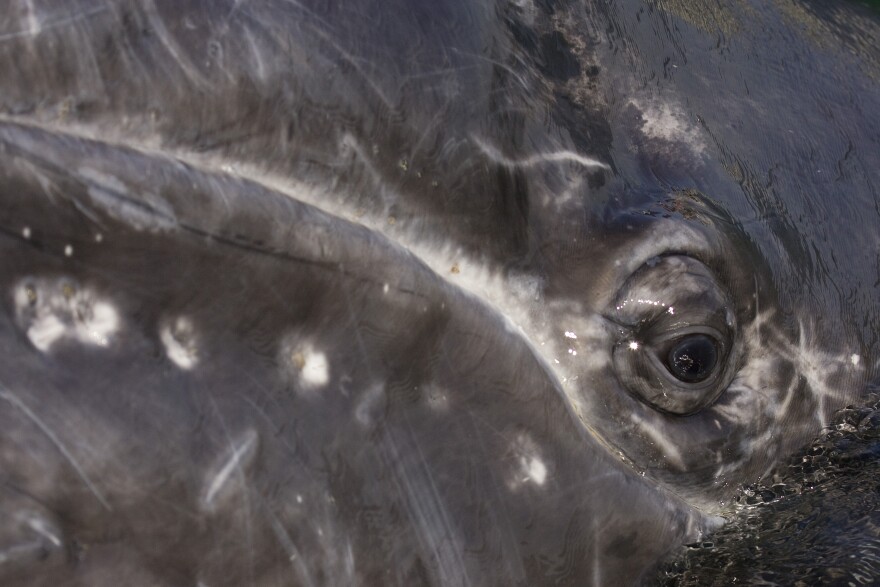Every other Friday on Morning Edition, Outside/In host Sam Evans-Brown tackles a question from a listener.
Myles from Alaska asks: When we go underwater, everything looks kind of weird and marbly. When whales are out of the water, what does it look like for them? Does it look weird because they’re not used to being in the air?
What a lovely and creative question! (Also, ultimately unanswerable! But we’ll skip the philosophy side of this question and just stick with what science can suggest.)
Let’s start with why everything gets blurry when we go underwater. Our eyes work by using the property of refraction to focus the light onto the right part of our retina, and refraction relies on the fact that when light goes from passing through the air to passing through your cornea it moves at a different speed.
Going under water mucks this all up because light moves through our eyeballs and water at almost the same speed, so there’s virtually no refraction. The ocean becomes like a giant watery extension of your cornea.
As soon as we put on a pair of goggles, the tiny pocket of air restores the cornea’s refractive power.
That leaves you with only the relatively weak focusing power of the lens in your eyeball, which does only the final touch of the bending of the light into the right place. As such, we’re super myopic underwater.
But Whale Eyes…
“They have a lens that is a perfect ball that is much much stronger than our lens,” explains Sonke Johnsen from Duke University, “That focuses the light without having a need for a cornea. Which means that it works just as well in the air as it does underwater.”
When you think about it, this makes sense, because whales come up to the surface and look around sometimes, so it’s useful, evolutionarily, to be able to see out there. Similarly, they’ve got pretty good low-light vision, because, well, it’s dark down there.
But you know what else is not useful underwater? Seeing colors.
“Once you get deeper than 40 feet or so, there isn’t any color. Everything’s blue” Sonke explains.
As such, whale’s are monochromats: they see in greyscale.
Why Does This All Matter?
Besides the fact that it’s fascinating? (You’re so demanding!)
Whale vision becomes particularly important when it comes to the critically endangered North Atlantic right whale, who are struggling with getting tangled up in the ropes that the booming Northern New England lobster fishing industry puts out.
Researchers at the New England Aquarium, including Marianna Hagbloom set out to try to figure out which colors they stand out for right whales and found that they seemed to avoid orange and red ropes more than other colors.
Sam Evans-Brown, is host of NHPR’s Outside/In which you can subscribe to where-ever you get your podcasts. If you’d like to submit a question you can record it as a voice memo on your smartphone and send it to oustidein@nhpr.org, OR call the hotline, 1-844-GO-OTTER, OR submit it here.








